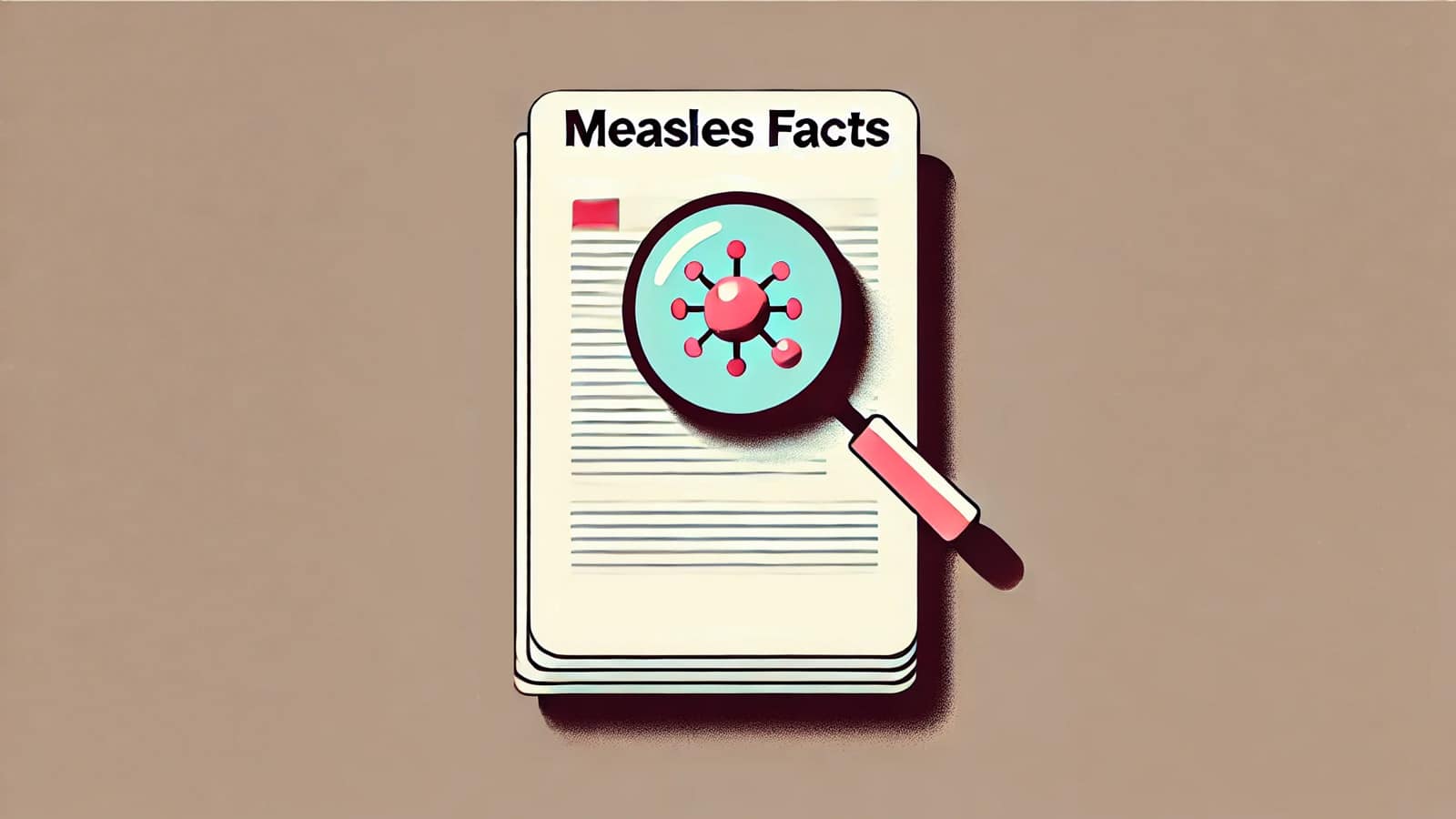The full story on measles isn’t what you see in the headlines. Here are 9 must-know facts, backed by research and clinical experience.

A recent tragic death of a child who had measles has sparked a media firestorm, with headlines pushing fear and urgency. But as we’ve seen before—especially during COVID-19—the media doesn’t always tell the full story or provide sound medical advice.
Before you rush out to get your family boosted against measles, perhaps it’s worth taking a step back. What do we actually know about measles? How does it behave in different populations? And is there more to the story than what we’re being told?
To help cut through the noise, here are 9 research-backed facts from IMA Senior Fellow Dr. Elizabeth Mumper, a renowned pediatrician, mother, and grandmother with decades of experience guiding families through measles and vaccine decisions.
Some of these facts may surprise you—so read on!
Want to learn even more about measles, including the measles vaccine and the childhood vaccine schedule in general? Watch this special webinar – featuring IMA fellows Dr. Liz Mumper and Dr. Renata Moon, two pediatricians who will give you the straight facts about measles and more. If you’re a parent, you won’t want to miss it!
Pediatrician Dr. Liz Mumper Joins TND to Discuss Measles
This morning, IMA Senior Fellow Dr. Liz Mumper joined The National Desk (@TND) to discuss the true risk of measles, potential issues with the MMR vaccine, and symptoms parents should monitor for. Watch now. pic.twitter.com/8a3N33zfu5
— Independent Medical Alliance (@Honest_Medicine) March 26, 2025
Dr. Mumper explains more about measles on The National News Desk.
9 Measles Facts from Pediatrician Dr. Liz Mumper
Without further ado, here are 9 measles facts straight from Dr. Mumper. Research references and further information can be found on the following pages:
- Kid’s Corner Episode 11: The MMR Vaccine Debate
- Kid’s Corner Episode 12: Treating Measles and Understanding Risks
1. Measles cases fluctuate yearly, with an average of 180 cases per year in the U.S.
Between 2000 and early 2025, there were 4,499 cases of measles in the U.S., averaging about 180 cases per year—but with wide variations by year. The last major outbreak occurred in 2019.
2. Measles is far more serious in developing countries than in developed ones.
Measles is usually a mild, self-limited illness in healthy children in developed countries but more dangerous in developing nations where children lack clean water, proper sanitation, and nutrition.
3. Vitamin A can be an effective measles treatment.
High-dose vitamin A (50,000–400,000 IU per day for two days) has been shown to reduce measles complications and mortality, particularly in malnourished children or those with nutritional deficiencies.
4. The measles vaccine has been shown to reduce vitamin A levels in children.
Studies show that both the measles-only and MMR vaccines significantly lower vitamin A levels 9–14 days post-vaccination (p < 0.005). This could be relevant when considering measles prevention strategies.
Treating Measles and Understanding Risks
In this episode of ‘Kid’s Corner,’ IMA Senior Fellow and pediatrician Dr. Liz Mumper discusses the history, risks, and treatment for measles, as well as potential issues with getting an MMR vaccine or booster during a measles outbreak.… pic.twitter.com/B0niTMsRIP
— Independent Medical Alliance (@Honest_Medicine) March 6, 2025
5. Waning immunity is a documented issue with the MMR vaccine.
While measles infection gives lifelong immunity, the MMR vaccine does not. 5% of children fail to develop immunity after the first dose. In fact, this failure to generate immunity is why the CDC introduced a second dose of MMR before kindergarten.
Many measles outbreaks in college dorms and military settings have occurred in fully vaccinated individuals due to waning immunity over time.
6. Multiple outbreaks have occurred in highly vaccinated populations.
- 1988 Colorado college outbreak: 98% of students were vaccinated.
- 1985 Texas high school outbreak: 99% of students were vaccinated.
- 1985 Blackfeet Indian Reservation outbreak: 82% of cases occurred in vaccinated individuals.
7. Measles mortality declined by 98% before the vaccine was introduced.
Between 1900 and 1963 (before the vaccine), measles mortality in developed countries dropped from 13.3 per 100,000 to 0.2 per 100,000 due to better sanitation, nutrition, and healthcare. This suggests that factors other than the vaccine contributed predominantly to the decline in measles mortality.
8. Measles can be treated with multiple interventions.
In addition to vitamin A, treatment options include:
- Immune globulin for immunocompromised patients.
- Ribavirin, an antiviral medication.
- Vitamin C and vitamin D, which support immune function.
9. The risks of measles complications vary greatly by health and nutrition status.
Most complications (diarrhea, ear infections, pneumonia, encephalitis) are rare in healthy children but more common in malnourished individuals. In the U.S., 92% of hospitalized measles patients were vitamin A deficient. This suggests that patients struggling with measles may also be struggling with other health issues at the same time.
The Real Scoop on Measles
In this episode of ‘Kid’s Corner,’ IMA Senior Fellow and
pediatrician Dr. Elizabeth Mumper discusses the complexities of measles and the MMR vaccine, including how natural measles provides lifelong immunity, unlike the vaccine. This is part one of a… pic.twitter.com/u37yBQbOky— Independent Medical Alliance (@Honest_Medicine) March 5, 2025
Final Thoughts
Measles is often portrayed as a terrifying disease, but the reality is far more nuanced. While it can be serious—especially in malnourished or immunocompromised individuals—measles is typically mild in healthy, well-nourished children living in developed countries.
History shows that measles mortality declined by 98% before the vaccine was even introduced, and outbreaks continue to occur even in highly vaccinated populations. Meanwhile, proven interventions like vitamin A and immune support play a critical role in managing measles and reducing complications.
Understanding the full picture—not just what the headlines say—allows parents and medical professionals to make informed decisions. If you found these insights valuable, be sure to explore Dr. Liz Mumper’s in-depth discussions in Kid’s Corner Episodes 11 & 12 for more research-backed information.


